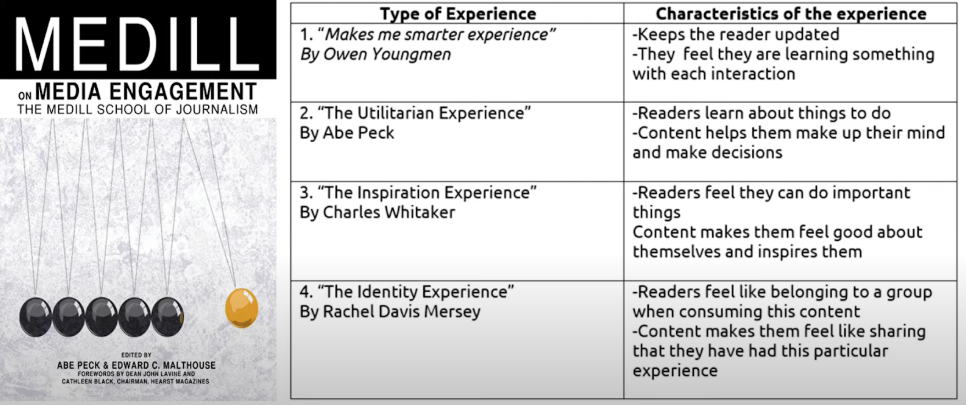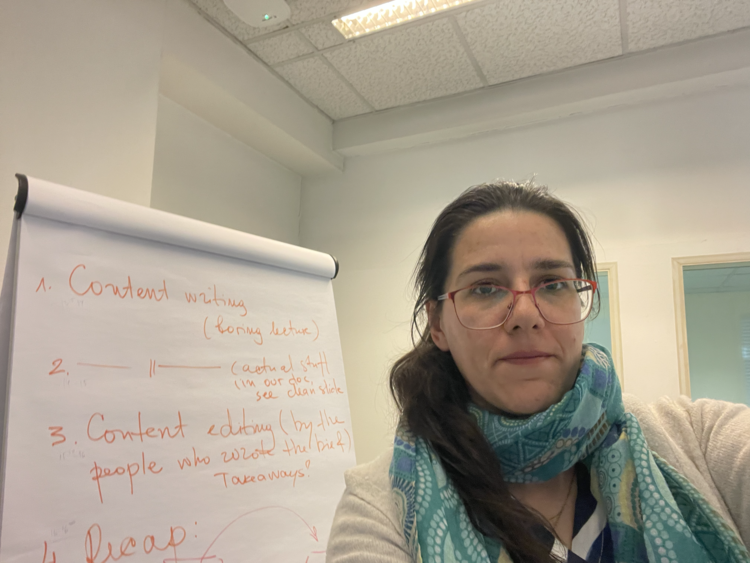What comes to mind when you think of blogs? Is it text? Writing? Web articles? Spoiler alert: Blog posts are more than just articles. They are powerful tools that can transform how brands connect with their audience, build trust, and share valuable insights. In the course Writing, Editing & Curating, led by Teodora Petkova, we learned that the workflow leading to the final blog encompasses so much more than just a quick write-up based on a keyword or two and done with a prompt or two. It’s not just about writing, but also about well-planned strategy to effectively reach your target audience.
What Are Blog Posts and Why Do They Matter?
Before we explain how to write a blog post, here’s one question worth pondering: what exactly is a blog post? It may sound simple, but the truth is that not a lot of people can answer it easily. There are numerous definitions of blog posts, and the definition can vary from person to person or from company to company.
For instance, blogs can differ fundamentally in their structure, style, length, media formats, and depth of content. Additionally, some blogs can be very informal, while others may resemble scientific articles. However in one definition, it is stated that a blog post is a publicly accessible online article that mainly consists of text but can also include images, links, or videos. Blog posts are regularly published and displayed in reverse chronological order. Readers can comment on, rate, and leave feedback on the post, provided feedback is implemented in the blog, after which the author can update the content if necessary.
Meanwhile, according to Teodora Petkova, blogs are an ideal content type for building readership. But not only that. Through building an audience, you not only expand a brand’s visibility but also work towards enriching the reader’s knowledge.
Successful blogs are about creating different types of experiences, such as through education, inspiration, and belonging (Malthouse & Peck, 2011). Business blogs can potentially help companies build a long-term and sustainable relationship with their target audience. Nevertheless it is important to note that the blog content must be relevant and valuable to the audience. Or as the content writer says:
“Give people what they want!”

How to Create a Blog Post
The exact procedure for writing a blog post naturally varies from company to company. However, there are five essential steps that can help establish an optimal company workflow for creating one. You can follow these steps to ensure that the process is efficient, consistent, and tailored to meet the company’s goals and audience needs.
1. Write a content brief
A content brief is a collection of requirements and recommendations for the content. It is meant to guide the author in creating the respective content. A typical content brief includes guidelines such as the blog's topic, the title of the blog, the approximate word count, and relevant keywords for SEO.
Nonetheless, a content brief can also be more detailed depending on the company’s needs. What is crucial for all content briefs, however, is asking the right questions. Questions that elicit answers with meaningful formulations, key messages, argument structures, value propositions, business justifications, and other linguistic elements. Below are some elements typically found in a content brief that should be considered before writing a blog post:
- Define business & content goals: What do you want to achieve (with content)?
- Who is my target audience and what are their needs? How will the content be written? Consider its tone and voice.
- What content messages will be conveyed? Identify the problems you’d like to solve through this blog, if any.
- Blog post creation workflow: Be sure to create a workflow with steps (e.g. timeframes & key actions).
2. Create a writing task.
Once there’s a solid brief, usually the Content Lead or SEO Manager would set up a writing task with clear guidelines. This would give the writer more insight as to what the blog post requires and make the process of writing the initial draft much easier.
The writing task usually includes the following:
- Target audience: Define who’s the target audience of the blog post. For instance, for corporations, this could be potential customers, partners, investors, or employees.
- Purpose of the article: Specify the purpose of the blog post. Do you want to simply educate the audience about a certain topic? Do you want to generate leads, increase product signups, or boost brand awareness? This could also influence the structure, angle, and content of the article.
- Word count: It’s best to indicate a range (e.g., 1,000–1,500 words). The average blog post length is 1,427 words, with longer posts often yielding better results.
- Tone & style: Specify if it should be conversational, formal, professional, or if you prefer a specific brand’s tone of voice.
- Call to Action (CTA): This can help encourage the audience to engage with the blog post. Some examples of a CTA include ‘Sign up for a newsletter,’ ‘Create an account,’ and ‘Start your journey,’ among many others.
- Keywords and tags: If the blog’s purpose is to improve SEO, it’s essential to specify the main keywords you’d like to target as well as the tags you’d like to include in the article.
3. Start writing.
If you’re the writer, after receiving the content task, you can already start putting pen into paper (or your fingers to the keyboard).
Different writers have their own writing styles, so there’s no specific format that could work for everyone, but if you need to start somewhere, here are a few tips:
- Create an outline. This can help you organize your thoughts logically, while ensuring a smooth transition between sections. In fact, bloggers who use structured outlines before writing are 2.5 times more likely to report success with their content. An outline can also make your content easier to follow and more engaging for readers.
- Write an engaging introduction. Hook your readers with a compelling opening. About 55% of visitors spend less than 15 seconds on a page before deciding whether to stay or leave. Therefore, if it’s boring or unclear, readers may leave before they even get to the main content.
- Break up the text. A lot of individuals skim blog posts rather than reading them word-for-word. Instead, they scan for key points. Hence, it’s crucial to use subheadings, bullet points, and short paragraphs to enhance readability.
- Use data and examples. Readers are more likely to trust information that’s backed by facts. Be sure to add data, statistics, and case studies from reliable sources to make your content more credible and engaging.
- Keep it reader-friendly. Avoid jargon and write in a conversational tone. It won’t matter if your blog is packed with valuable insights, if it’s too difficult to read. The Niesen Norman Group recommends writing copies at a 7th to 8th-grade level for a better reader experience.
- Add visuals. Did you know that blogs with visuals get 94% more views than those without? Using images, charts, and infographics can help break up content and make it easier to scan. Visuals can also reinforce key points, keep users engaged, and encourage them to stay on the page.

4. Editing and final touches on the copy.
Editing and refining the blog post before hitting publish is crucial for ensuring clarity, credibility, and overall quality. Even the most well-researched and engaging content can lose its impact if it contains errors or lacks proper structure. This part is usually done by a Content Manager or Editor. However, if you’re doing all the steps on your own, these tips could help:
- Check for grammar and spelling errors. According to RealBusiness, 59% of users don’t trust a website that contains spelling and grammar errors. Such mistakes can tarnish your post’s credibility, make it seem unprofessional, and affect the overall experience of users. If you’re not confident in your proofreading skills, tools like Grammarly would be handy.
- Ensure SEO best practices. Optimizing your blog post for search engines is essential for driving organic traffic to your site. Follow SEO best practices, such as adding target keywords to your headings, meta title, and meta description, and adding alt text on images to rank your post in search results.
- Read it out loud. – This can help you identify awkward phrasing, unclear sentences, or spots where the flow feels off. It forces you to pay closer attention to the actual sound and rhythm of your writing.
- Get a second opinion. Have a colleague or another editor review the content. A fresh perspective can catch errors or inconsistencies that you might have missed.
5. Publish the article.
Once everything looks polished, it's time to go live! Depending on a specific organization’s process, the writer or editor may directly upload the blog post on a content management system (CMS) or they can just submit it to the web team (if applicable).
The Ultimate Recipe for a Blog Post: Balance Quality Content With Strategic Optimization
Creating a well-structured and engaging blog post is both an art and a science. Yet, at the end of the day, a successful blog post is one that resonates with readers, provides value, and encourages interaction. Whether your goal is to educate, inspire, or drive conversions, the key lies in balancing quality content with strategic optimization.
By following best practices from ideation to publishing, you can create blog posts that not only attract attention but also build trust and authority as you go. Just keep refining your process, stay consistent, and watch your blog grow into a valuable resource for your audience over time.
Happy blogging!
Where to go from here #
Web accessibility: 5 key elements for inclusive design
The Importance of Placemaking in Information Architecture
Content Strategy Books: A Review of Google Semantic Search by David Amerland
References #
References:
Dean, B. (2024). Blogging statistics: The ultimate list. Backlinko. https://backlinko.com/blogging-stats
Kessler, S. (2019, October 22). UX writers: What grade level are you writing at? UX Collective. https://uxdesign.cc/ux-writers-what-grade-level-are-you-writing-at-2b3fa1544c2e
Madrigal, A. C. (2014, March 9). What you think you know about the web is wrong. TIME. https://time.com/12933/what-you-think-you-know-about-the-web-is-wrong/
Malthouse, E. C., & Peck, A. (Eds.). (2011). Medill on media engagement. Newburyport, MA: Hampton Press.
Orbit Media Studios. (2024). Blogging statistics and trends: What’s changing in blogging? Orbit Media. https://www.orbitmedia.com/blog/blogging-statistics/
Petkova, T. (2021, July 26). 9 Types of Experience: Helpful Rules for Content Marketers - Kalicube Knowledge Nuggets [Video]. YouTube. Kalicube. https://www.youtube.com/watch?app=desktop&v=hs-h8BlZkg0
Rainer, A., & Williams, A. (2019). Using blog‐like documents to investigate software practice: Benefits, challenges, and research directions. Journal of Software: Evolution and Process, 31(11), e2197.
Teacher: Teodora Petkova, Summer Semester 2025

